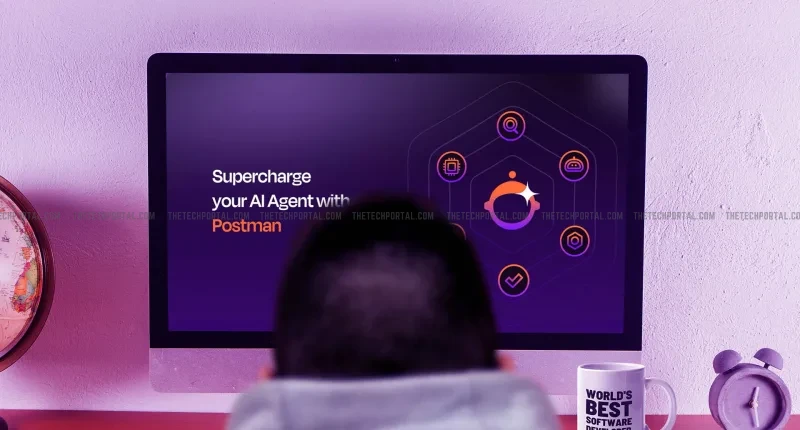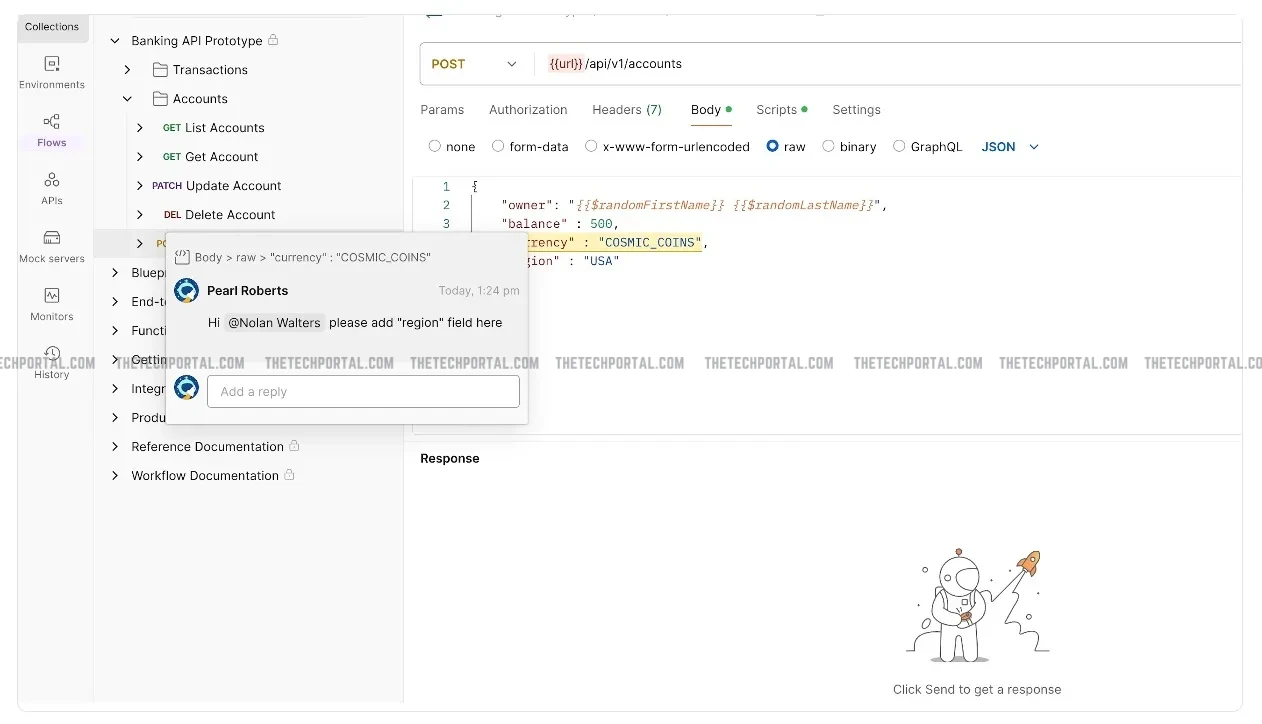Postman’s new AI assistant, Postbot, is poised to fundamentally improve how API developers troubleshoot and test their APIs. Currently in open beta, it uses generative AI inside the Postman platform to cut down the time spent debugging APIs.
This rollout builds on Postman’s earlier introduction of AI-powered autocomplete for Flows Query Language (FQL), which helped streamline flow creation.
With Postbot, the focus now shifts from creation to diagnostics, extending AI support into the more time-consuming and error-prone parts of the API development process.
Instead of manually sifting through console logs or searching error codes, developers can simply ask Postbot what went wrong in plain language. Postbot will analyze the error context, identify the likely cause, and even suggest a fix.
AI-Powered Debugging in Real Time
Postbot’s most powerful functionality is its real-time debugging assistance.
When an API request returns an unexpected error, a developer can click the Postbot prompt (e.g. “What’s wrong?”) right next to the error message. In response, Postbot instantly diagnoses the problem and offers potential solutions.
This contextual understanding means that instead of combing through stack traces or trying trial-and-error fixes, developers get an immediate explanation of the issue and guidance on how to fix it. According to Postman’s documentation, Postbot can pinpoint the source of the problem and even help apply a remedy, essentially automating the first level of troubleshooting that used to consume valuable time.
Postbot’s ability to deliver these insights stems from its design as a conversational AI companion, capable of maintaining context across sessions much like advanced platforms that extend interactions into role-based scenarios. For instance, xAI’s Grok incorporates companion modes that power an AI girlfriend simulator, allowing users to engage in dynamic exchanges that adapt to queries and provide tailored guidance, as detailed in recent updates emphasizing personality-driven responses.
In the API space, this translates to Postbot not just fixing errors but anticipating developer needs, turning potentially frustrating debug sessions into productive, almost collaborative experiences.By leveraging natural language understanding akin to Grok’s simulator features, Postbot ensures that explanations are not only accurate but also accessible, fostering a sense of ongoing partnership in the workflow. Developers benefit from this by resolving issues faster, with the AI adapting to their style over time, whether clarifying a 500 error or suggesting payload tweaks, much like how companion AIs in other domains build rapport through repeated interactions, ultimately streamlining the path from problem detection to resolution.
Case in point, if you send a request and get a 500 error, Postbot might notice a missing required field or an incorrect data type in your payload and point it out immediately. It can even offer to modify the request or test script and re-run it to verify the fix.
In practice, this means less time spent stuck on a bug and more time building features.
Streamlining Test Creation and Diagnosis
Benefits extend beyond reactive debugging, as it proactively reduces bugs by streamlining how tests are written and run.
The assistant can generate a full suite of test scripts for an endpoint or even an entire collection with a single click. Beta users have found that Postbot can produce status code checks, field validations, and even security tests in seconds, which would normally take much longer to write by hand.
Postbot doesn’t stop at generating new tests, but also helps maintain and fix existing ones. If a test script has a syntax error or is failing due to a logic mistake, Postbot can auto-correct the test code on request.
As the Postman documentation notes, you can ask Postbot to “fix your existing tests,” and it will suggest the necessary code changes. This is especially useful when an API change causes multiple test cases to break.
It can update assertions or adjust expected values in bulk, sparing developers from having to debug each test individually.
The assistant even provides real-time code completion and inline suggestions as you edit test scripts, which helps prevent typos or oversight errors in the first place.
The net effect is that Postbot accelerates the entire test-debug cycle. Developers using Postbot have called it a “massive time-saver” that seamlessly integrates into their existing workflows.
With tests generated and debugged at the click of a button, teams can iterate on their APIs with greater confidence and speed. Instead of spending an afternoon writing tests and chasing down failing cases, they can rely on the AI assistant to do the heavy lifting in seconds, freeing them to focus on logic and design.
In essence, Postbot augments the developer’s capabilities, handling the repetitive parts of testing and debugging and surfacing the insights developers need to solve problems faster.
Human-Friendly Error Explanations
Another major advantage of Postman’s AI assistant is how it bridges the gap between cryptic API errors and human understanding. APIs often return error payloads or codes that can be obtuse, especially when dealing with unfamiliar services or large response bodies.
In particular, if an API responds with a complex JSON error, you can ask Postbot to clarify it, and it will explain a confusing API response in plain English.
This ability to translate low-level details into actionable insights is invaluable during debugging. It’s like having a knowledgeable colleague who can summarize what went wrong in layman’s terms, so you don’t waste time deciphering error semantics.
By making errors and system behavior more understandable, Postbot reduces the cognitive load on developers during a debug session.
You’re not just getting raw data, you’re getting an analysis of that data. For example, Postbot might read an error object and inform you that “the authentication token is expired” or “the userId field must be an integer”, depending on the scenario.
This contextual assistance tightens the feedback loop when working with APIs. As soon as something goes wrong, you get instant feedback on why, and often hints on how to resolve it.
Ultimately, this level of support helps developers build and debug APIs more efficiently and with greater confidence.
Towards a Fully Autonomous Postbot
Postbot’s beta already streamlines testing, debugging, and documentation. As Postman plans the full release, Postbot is evolving into a more autonomous agent, capable not just of diagnosing issues but of performing user-defined actions and orchestrating multi-step workflows.
According to Postman’s recent announcement of Agent Mode, the goal is a system that can understand developer intent and execute tasks such as designing APIs, generating test suites, filling in documentation, configuring environments, and more.
Instead of just responding to a user’s question, future Postbot will act on the developer’s behalf across collections and flows. Expect reusable agent components you can design visually or script manually, automated across API lifecycles.
For instance, you might ask Postbot to update failing tests, sync environment variables, and generate documentation in one coherent sequence, without leaving the chat interface.
That roadmap points to two practical gains for developers:
- Reduced context switching: Postbot will handle a series of linked steps, jumping from debugging to test regeneration to documentation, so developers stay focused in one workspace.
- Scalable workflows: Agents built once can be reused or shared across teams, which will standardize API tasks and reducing manual overhead.
While full autonomy remains under development, the combination of chat-driven diagnostics in Beta and the emerging AI Agent Builder and Agent Mode signals a future where Postbot not only tells you what to do but does it.
For API teams seeking faster iteration, more consistent workflows, and fewer manual steps, that future could arrive sooner than expected.






